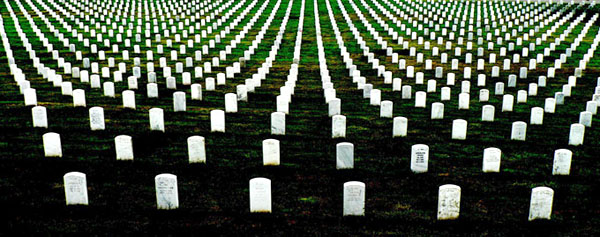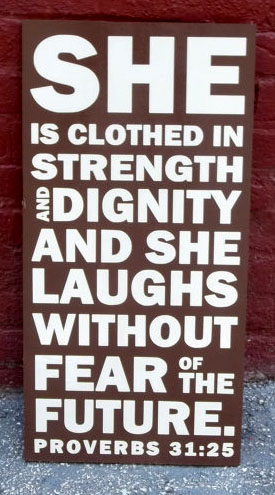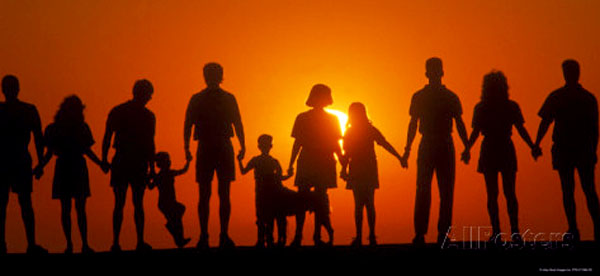Life is a Casting-On

“Our older population has paved the way for all of us to live the
lives we live. They have served in wars, challenged political
views, brought us out of unstable economies, looked
out for us as children, created medications that saved our
lives, taught us morals, ethics and values, taught us how to think
and be independent adults. They deserve to be cared for in the best
possible manner. Caregivers who have devoted their lives to caring
for the elderly will not tolerate disrespect to this population.”
-Celeste Delano-Blackshire,
Assisted Living Home Care Administrator
Instead of separate views of physical health and mental health, Wellness is seen by many in the mental health world as a more holistic and lasting view of a healthy self “in which body, mind and spirit are integrated…to live life more fully,” because “humans are more than the sum of our parts and cannot be divided” even when facing the end of life (Myers & Sweeny, 2008, p. 3). However, Elder Care, as an area of wellness and mental health “is overlooked way too much” according to Assisted Living Home Care Administrator Celeste Delano-Blackshire, “Yes, mental health is a part of all aspects of health care” including Elder Care. In fact, “most long term care homes have become a safe haven for mental health patients since most families cannot handle the care or there are no families” (Delano-Blackshire, 2014).
Ms. Blackshire “never asked myself why I choose this population to work with…I swear I never seen myself here in high school” she said. She started as an elder care aid but soon found this career was her passion. She is presently not only an Assisted Living Home Care Administrator but a PA certified trainer for medication and direct care staff, with further certifications as a CPR/ First Aid/AED Trainer and, of course, in Geriatric mental Health. Though she may not have made a conscious choice of this career or population, she chose to advance in it because of “how lucky am I that I get to care for, protect, and make a difference to these people in the hardest times of their lives. If you think about it like that and you actually feel the emotion behind that, there is nothing else I’d rather do.” (Delano-Blackshire, 2014).
Facing the Common Fear
 The life expectancy and population of Americans older than 65 has tripled in the 20th century, but concurrently, “elders experience the greatest number of deaths in the United States…often of poor quality” of mental and physical health, care and companionship in the years leading up to those deaths (Schroepfer, 2006, p.129). I will be the first to admit that, though the thought may have crossed my mind a time or two—usually when a garish headline of nursing home neglect caught my eye—the concept of death and dying wasn’t something that I thought much about. Like anyone, I’ve had family pass away. Most we lost suddenly, when their quality of life was higher, and we grieved as most Americans do; funerals, suits and tears. Part of our consolation involved the distinctly Western view of “successful aging…associated with continued independence” over other cultures views that “successful aging is the willingness to” partner with their families and “meet financial, psychological and physical needs” (Weaver, 2011, p.45).
The life expectancy and population of Americans older than 65 has tripled in the 20th century, but concurrently, “elders experience the greatest number of deaths in the United States…often of poor quality” of mental and physical health, care and companionship in the years leading up to those deaths (Schroepfer, 2006, p.129). I will be the first to admit that, though the thought may have crossed my mind a time or two—usually when a garish headline of nursing home neglect caught my eye—the concept of death and dying wasn’t something that I thought much about. Like anyone, I’ve had family pass away. Most we lost suddenly, when their quality of life was higher, and we grieved as most Americans do; funerals, suits and tears. Part of our consolation involved the distinctly Western view of “successful aging…associated with continued independence” over other cultures views that “successful aging is the willingness to” partner with their families and “meet financial, psychological and physical needs” (Weaver, 2011, p.45).
When some of my family took longer to pass away, we rallied around them to meet those needs, and each time it was a challenging balance between providing and trying to be respectful. I can only imagine what that was like for them. Schroepfer notes six evolving “mindframes toward dying” that every person moves through from “not ready nor accepting” to “ready, accepting and wishing death would come” (2006, p. 129). While that last one seems chilling to me, Mrs. Delano-Blackshire has personally observed that the alternative is often lingering low in the anger/depression stages of personal grief that is “probably the hardest stage of dying not only for the client but for the caregiver as well. [This is when] a caregiver needs to not only ensure the client is being cared for in a proper way but they must be available for positive emotional support for the client and family.”  Then, when “the client has come to terms with his/ her mortality, [they] will enter this stage before loved ones do and the caregiver must make known that they are there for the client. He or she is not alone” (Delano-Blackshire, 2014).
Then, when “the client has come to terms with his/ her mortality, [they] will enter this stage before loved ones do and the caregiver must make known that they are there for the client. He or she is not alone” (Delano-Blackshire, 2014).
I believe this universality of death is both why elder care is often overlooked and also its greatest value. “Everybody’s scared of dying…” said an interviewee of Schroepfer’s (2006, p.133), and that is why many don’t want to face it—as a Wellness field or in life. “Everybody wants to see the sun come up. You know, even though we know that death is inevitable and it’s going to happen to each and every one of us, we fear the unknown. Yeah. We fear the unknown.”
Avoiding that shared fear of the unknown has made Elder Care something we look into only when forced to by unfortunate events, but though “end of life challenges can be the most difficult, not only for the client but for the caregiver and families of the client” facing that unknown together, with a focus on achieving wellness can be the key to living well in all the years left (Delano-Blackshire, 2014).
It’s Not Just About Dying With Dignity
 Though every country and culture has differing practices in how to age well and care for those aging, “each society has a conceptualization that older people possess different rights, responsibilities, privileges and burdens than those possessed by younger people” (Weaver, 2011, p.43). One universal desire unites young, old and all races, the desire not just to die with, but to live with dignity.
Though every country and culture has differing practices in how to age well and care for those aging, “each society has a conceptualization that older people possess different rights, responsibilities, privileges and burdens than those possessed by younger people” (Weaver, 2011, p.43). One universal desire unites young, old and all races, the desire not just to die with, but to live with dignity.  “Just like all human beings [in] caring for the elderly you have to take all aspects of the individuals life into consideration and…respect that…most older adults will lose the ability to walk without assistance, the ability to hear and/or see clearly, cognitive ability, the freedom to make decisions without assistance, the ability to care for themselves and /or their spouse, the ability to drive due to the loss of their physical abilities in return the ability to be independent” according to Mrs. Delano-Blackshire. They will lose spouses, friends and even lose weight due to the loss of ability to taste food, but they retain their desire for dignity. “It is important for the nurse or caregiver to understand the physical changes that happen with normal aging process and know how to adapt according. She trains her staff to engage “each older adult as an individual who is capable of learning and changing. Nursing and/or care giving is not only about taking care of a client but also about continuous teaching to help the client maintain as independent as possible” (Delano-Blackshire, 2014).
“Just like all human beings [in] caring for the elderly you have to take all aspects of the individuals life into consideration and…respect that…most older adults will lose the ability to walk without assistance, the ability to hear and/or see clearly, cognitive ability, the freedom to make decisions without assistance, the ability to care for themselves and /or their spouse, the ability to drive due to the loss of their physical abilities in return the ability to be independent” according to Mrs. Delano-Blackshire. They will lose spouses, friends and even lose weight due to the loss of ability to taste food, but they retain their desire for dignity. “It is important for the nurse or caregiver to understand the physical changes that happen with normal aging process and know how to adapt according. She trains her staff to engage “each older adult as an individual who is capable of learning and changing. Nursing and/or care giving is not only about taking care of a client but also about continuous teaching to help the client maintain as independent as possible” (Delano-Blackshire, 2014).
This process of adaptive living, over resigned dying is the opposite of Willy Lowman’s wife Linda’s line about inevitable loss in Miller’s Death of a Salesman, that “life is a casting off” of dreams and abilities (Miller, 1949. p. 7). While losses abound, helping anyone—old or young—to “cast on” new behaviors, is the key to living well, regardless of the term “assisted living.” Everyone, at every age, is living an “assisted” life, no matter if that assistance is through a hired aid, a spouse, a teacher or any of the other myriad of ways we come alongside one another to live well. When an older person is either coping with the “casting offs” or resistant to the “casting ons” Weaver (2011) has found that the best way to build an effective rapport is value the person, their history and their views “thus a positive, culturally based attitude may mediate many of the negative consequences of caregiving” (p.45). Mrs. Delano-Blackshire agrees, encouraging her staff in the same practice because “this will help you to better understand the person you care for and will also open doors for the client to respect you witch in return will open lines of communications and make the client to feel secure and respected” (Delano-Blackshire, 2014).
Helping at the Hardest Parts
 Mutual respect and security are keys to “casting on” new behaviors, but difficult to attain in “…Western societies [in which] work is highly significant in defining identity and status [but] loss of employment, with its consequent loss of status, is seen as the central feature of aging.” Focusing on maintaining a dignified lifestyle creates conflict in the heart of the aging with this personalized lack of perceived status as much as the desire to support that lifestyle conflicts with family caregivers lacking “…the resources, energy, time or willingness to take on the responsibility…even when cultural values support caring for elders” (Weaver, 2011, p. 44-45). Mrs. Delano-Blackshire encourages families that “admitting you’re having a hard time is not a sign of weakness. It is a sign of strength. Caring for any type of human being is hard at times. It’s hard, ask for help.”
Mutual respect and security are keys to “casting on” new behaviors, but difficult to attain in “…Western societies [in which] work is highly significant in defining identity and status [but] loss of employment, with its consequent loss of status, is seen as the central feature of aging.” Focusing on maintaining a dignified lifestyle creates conflict in the heart of the aging with this personalized lack of perceived status as much as the desire to support that lifestyle conflicts with family caregivers lacking “…the resources, energy, time or willingness to take on the responsibility…even when cultural values support caring for elders” (Weaver, 2011, p. 44-45). Mrs. Delano-Blackshire encourages families that “admitting you’re having a hard time is not a sign of weakness. It is a sign of strength. Caring for any type of human being is hard at times. It’s hard, ask for help.”
Hiring someone to care for their loved one is a common avenue, even if Weaver (2011) notes that this choice can run counter to many cultural expectations of the family’s role and bring with it a wealth of negative emotions such as “their own guilt, anger, frustrations, depression and or whatever else” which makes dealing compassionately with families “…one of the biggest and most challenging issues that will arise” while constantly prioritizing “…what is in the best interest of the client at all times” according to Mrs. Delano-Blackshire (2014).
As I reflect on my own barriers to facing the issue of aging and dying, I find that my struggle mirrors that of the family and the industry itself. I am challenged by Schroepfer’s observation that “an increased comfort with dying and death could result in practitioners being more receptive to terminally ill elders to express their fears.” This may be the same barrier that is impeding my exhortation to “develop palliative care programs from a holistic rather than a primary medical perspective” (Schroepfer, 2006, p. 138). Mrs. Delano-Blackshire’s exhortation is even more direct. No matter if one focuses on mental health, physical health or a holistic wellness approach, “compassion and empathy are a must. If you are coming into this field for a paycheck only you might as well pick something else.”
She balances her exhortation with encouragement to caregivers, professional or family members. “Learn from the people you care for, fall in love with the people they are, have fun. Enjoy the good times because the bad times are hard. The good times and rewards you get help you to get through the bad stuff” and thus both the caregiver and the cared for will find dignity and live well, not in spite of death, but in light of it.
__________________________________________________
Delano-Blackshire, C. (2014) Email Interview
Miller, A. (1949) Death of A Salesman [PDF]. Penguin Books. Retrieved from: http://www.pelister.org/literature/ArthurMiller/Miller_Salesman.pdf
Myers, J. E., & Sweeney, T. J. (2008). Wellness counseling: The evidence base for practice. Journal of Counseling and Development, 86(4), 482–493.
Schroepfer, T. (2006) Mind Frames Toward Dying and Factors Motivating Their Adoption by Terminally Ill Elders. The Journals of Gerontology. 61B, 3; Proquest
Weaver, H. (2011) Serving Multicultural Elders: Recommendations for Helping Professionals. Care Management Journals. 12; 2

